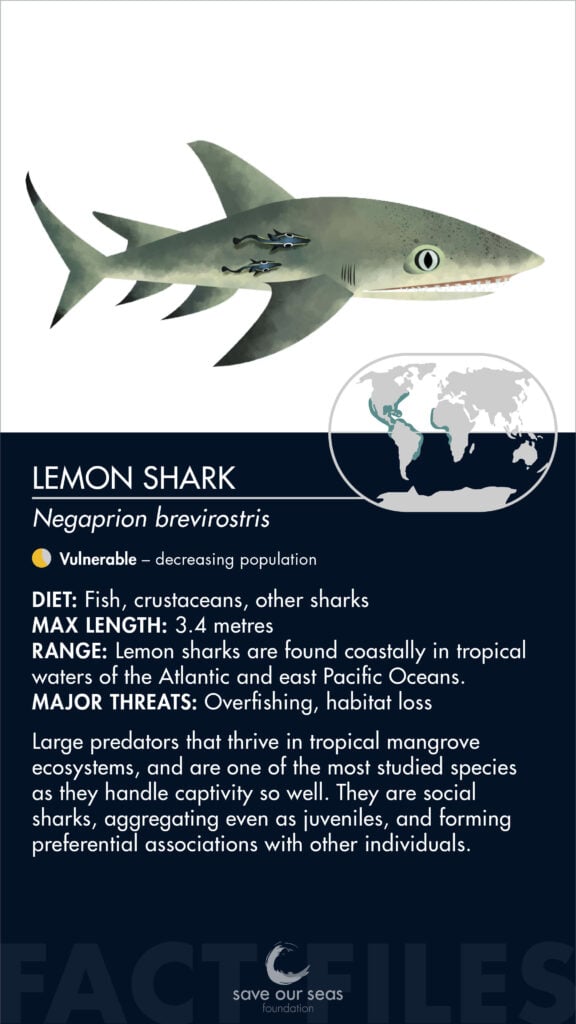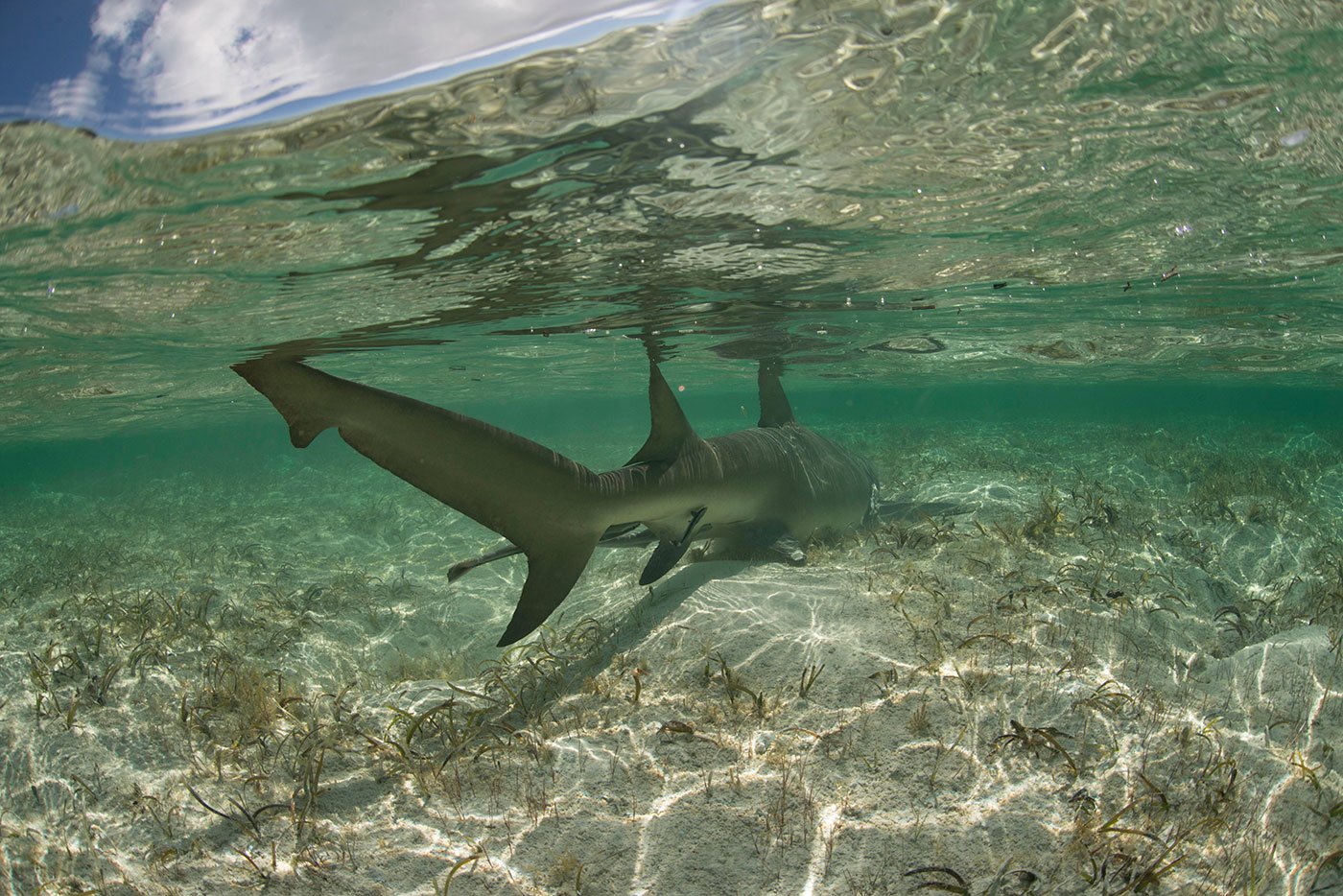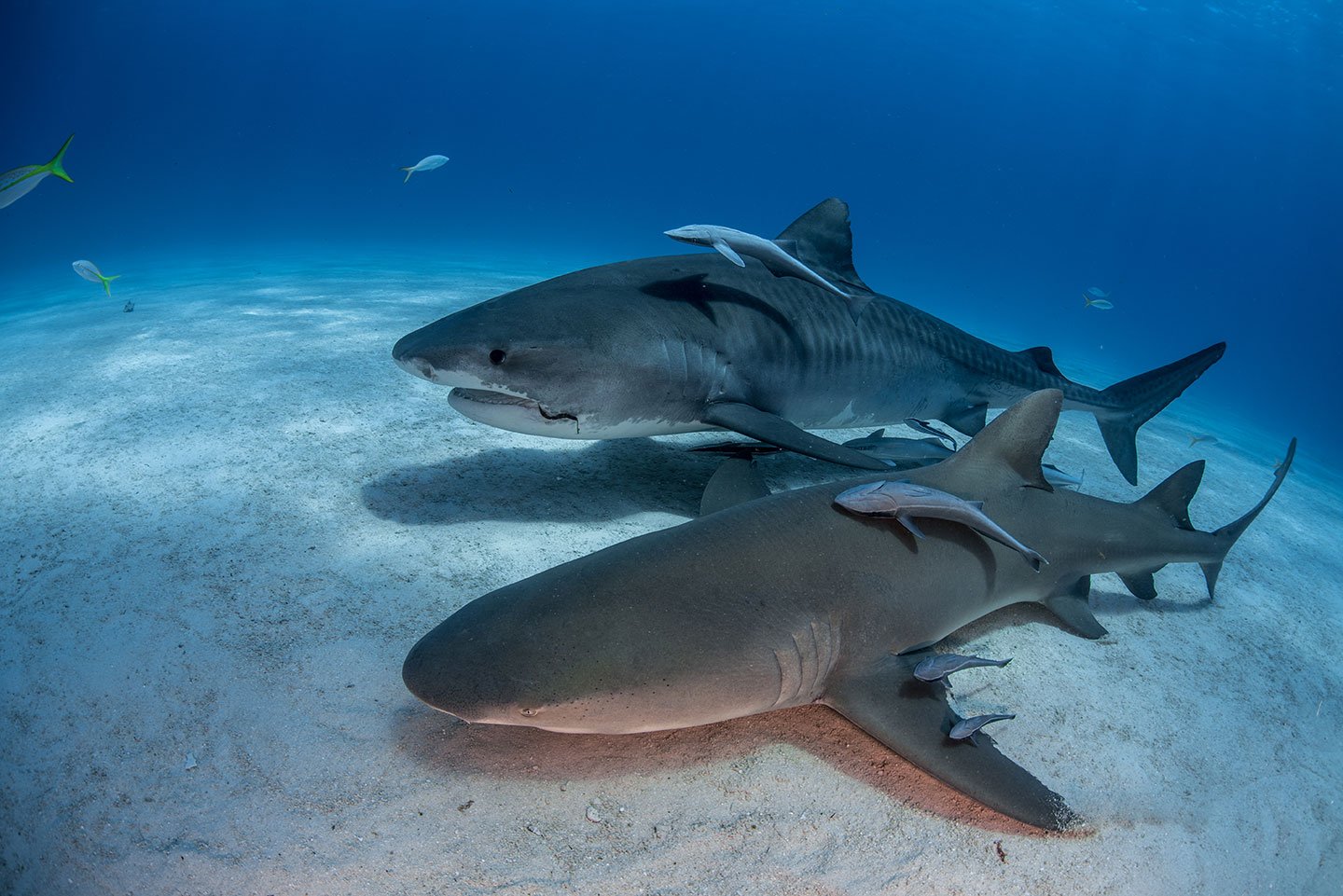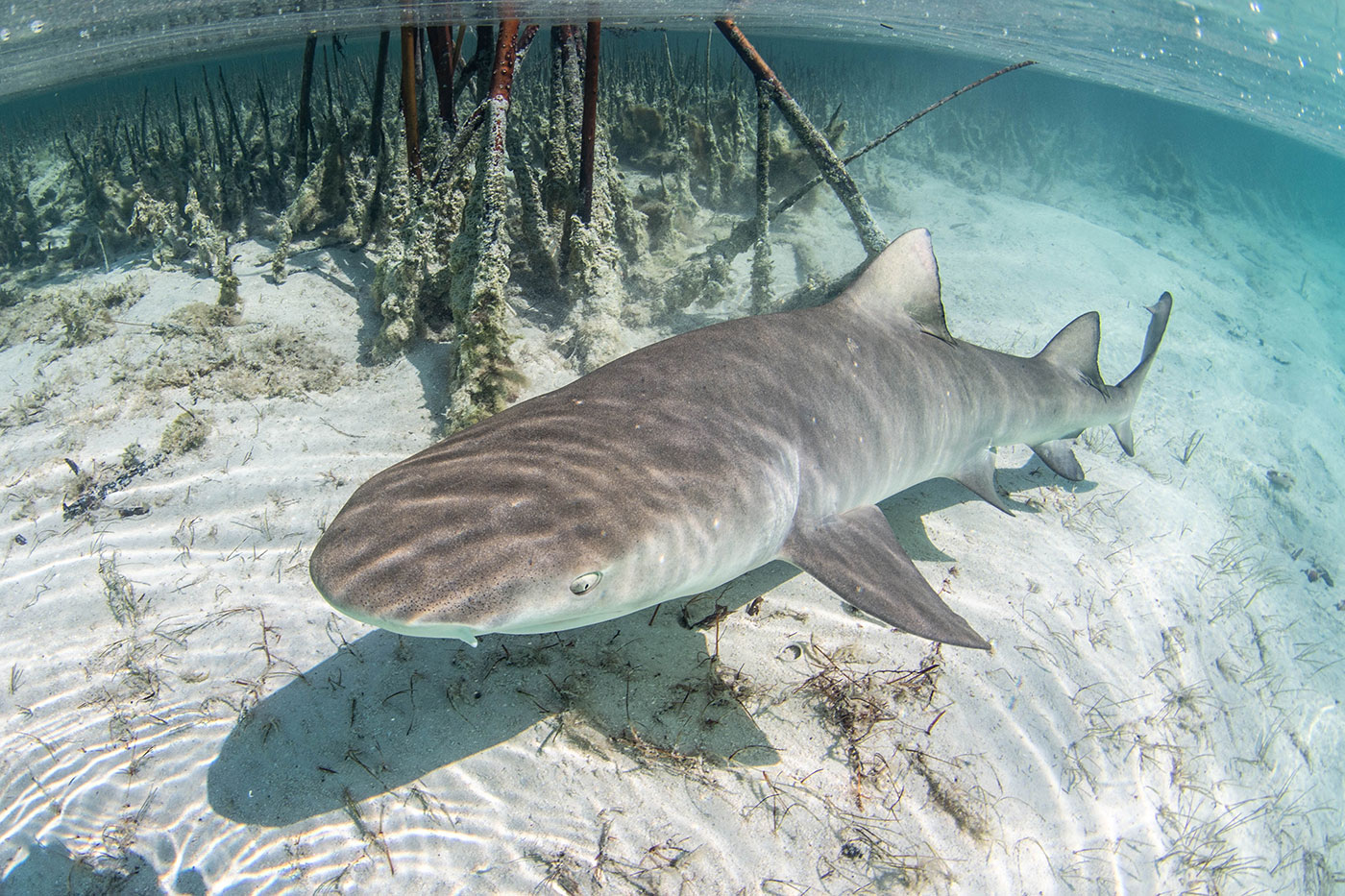Lemon shark
Negaprion brevirostris
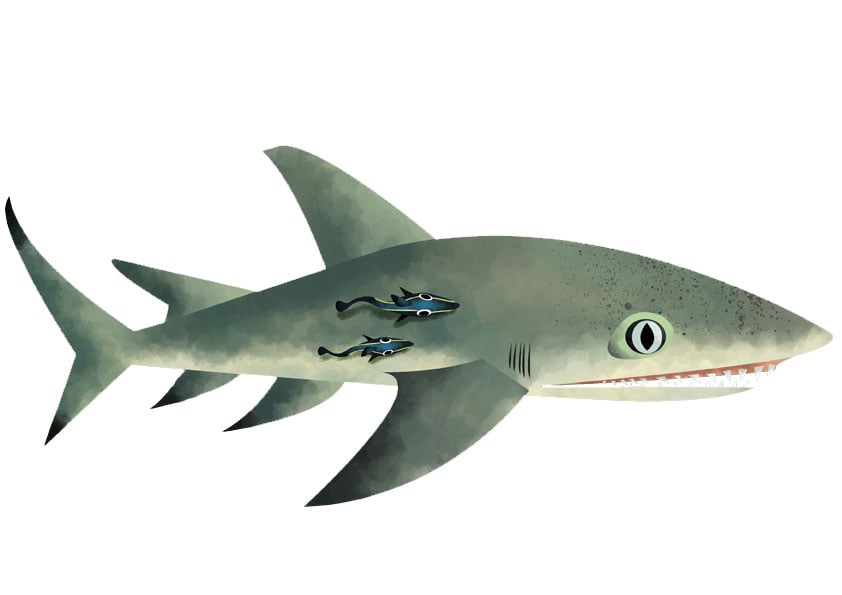

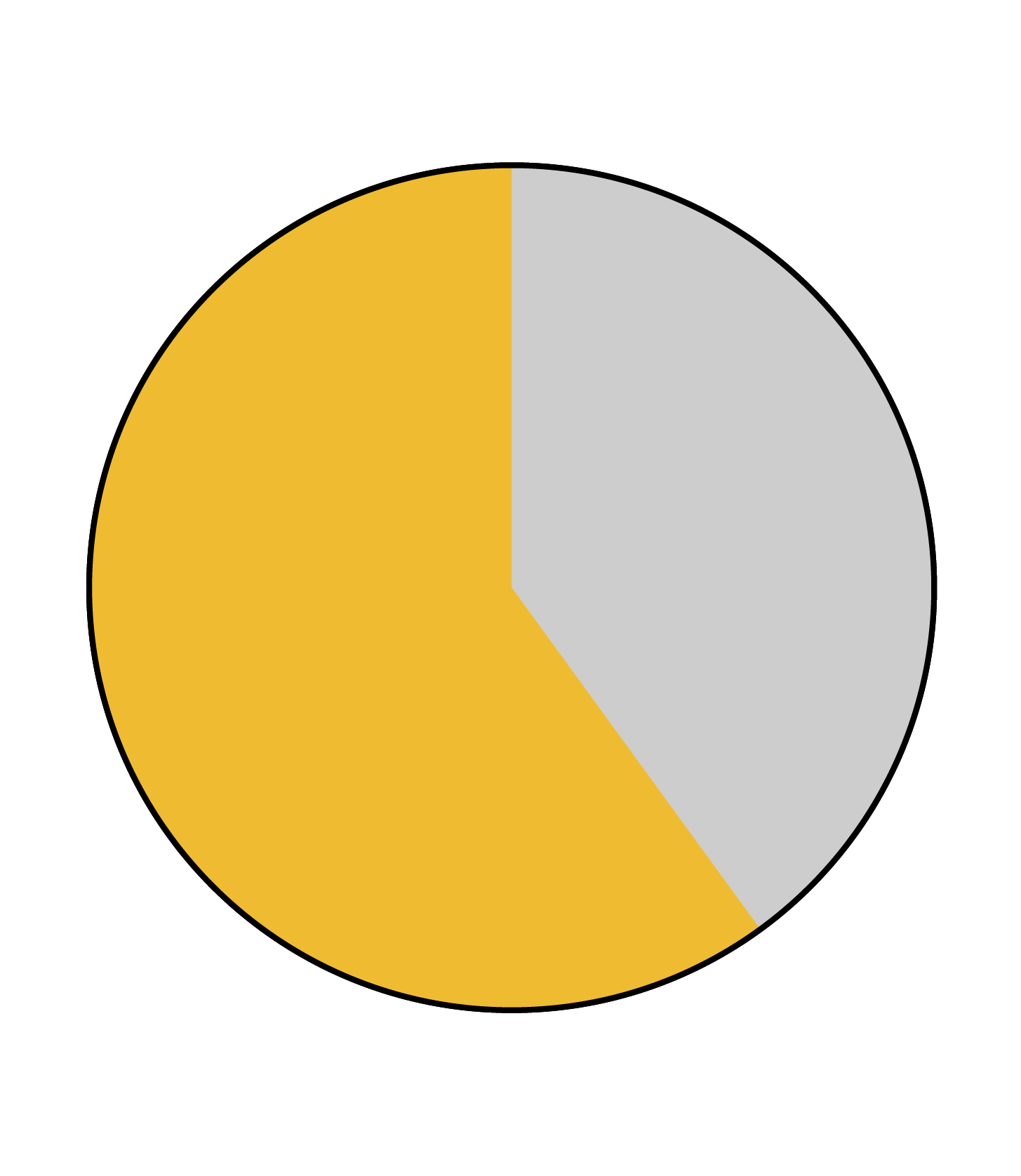
Lemon sharks are large predators that thrive in tropical mangrove ecosystems, and are one of the most studied species as they handle captivity so well. They are social sharks, aggregating even as juveniles, and forming preferential associations with other individuals. Lemon sharks display natal philopatry, whereby a mother will return to where she was born to have her own pups.
Identification
Lemon sharks are large yellow-brown sharks without any particular markings, but they are most readily recognisable by their second dorsal being nearly as large as their first dorsal (in most shark species the second dorsal is significantly smaller). They have quite blunt, short snouts, and their first dorsal is set back behind their pectoral fins.

Special behaviour
Lemon sharks are social sharks that form preferential associations with other individuals and are capable of learning by watching others. They also appear to have distinct personalities, with some behaving more boldly than others. They are capable of resting on the seafloor and pumping water over their gills to breathe.
Reproduction
Lemon sharks are viviparous, meaning they have a placenta and give birth to live young. Up to 17 pups are born at a time, after a 10- to 12-month gestation period. Lemon sharks only mature at 11–13 years, and will return to their own nursery grounds to give birth – this is known as natal philopatry. Pupping preferentially occurs in mangrove habitats, where it is presumed the complex, shallow mangrove systems provide refuge to the pups from predation.
Habitat and geographical range
Lemon sharks are found coastally in tropical waters of the Atlantic and east Pacific Oceans. They primarily inhabit coral reefs and coastal systems such as mangroves and enclosed bays.

Diet
Lemon sharks eat a variety of fish species (e.g. mojarras and parrotfish), crustaceans (e.g. crabs) and molluscs (e.g. octopus). They will also feed on other sharks, including smaller lemon sharks.
Threats
Overfishing is the primary threat to lemon sharks, as they are frequently caught as target and bycatch in longline and gillnet fisheries. Throughout much of their range, these fisheries are intense and largely unmanaged. As a result, they are experiencing severe population declines, currently estimated to be in the region of 50–79% over the past 50 years. Another major threat is habitat loss and degradation, as the mangrove systems they occupy are often removed for coastal development or converted into shrimp aquaculture.
Relationship with humans
Lemon sharks have long been used by humans, primarily for shark products from fisheries (meat, fins, skin for leather), but also for display in aquaria and increasingly as a target for ecotourism operations (especially in The Bahamas). They have also long been a model species for modern elasmobranch research, with much of our current understanding of shark biology and physiology coming from studies on lemon sharks.
Fun Facts
Just like homing pigeons, displaced lemon sharks are able to orientate themselves and find their way home.
They are named for their yellow-brown skin that enables them to blend in with the sandy, tropical waters they inhabit.
They have friends! Research shows that they make preferential social connections with other lemons sharks.
Pregnant females will return to where they were born to give birth.
References
David A. Ebert. et al, 2021, Sharks of the World: A Complete Guide.
IUCN Red List of Threatened Species, Lemon shark: Negaprion brevirostris
Florida Museum, 2018, Negaprion brevirostris
Oceana, 2021, Lemon shark: Negaprion brevirostris
